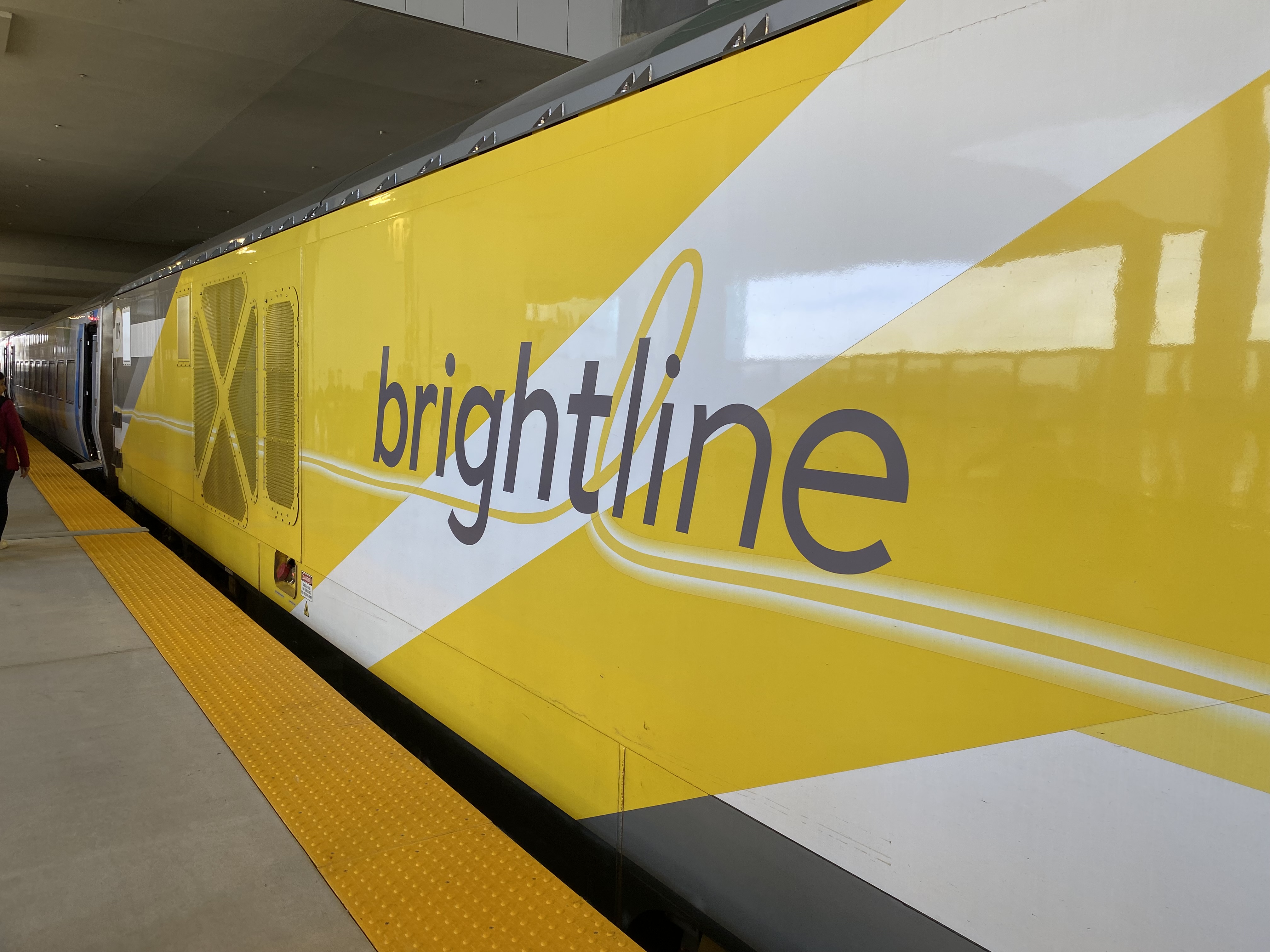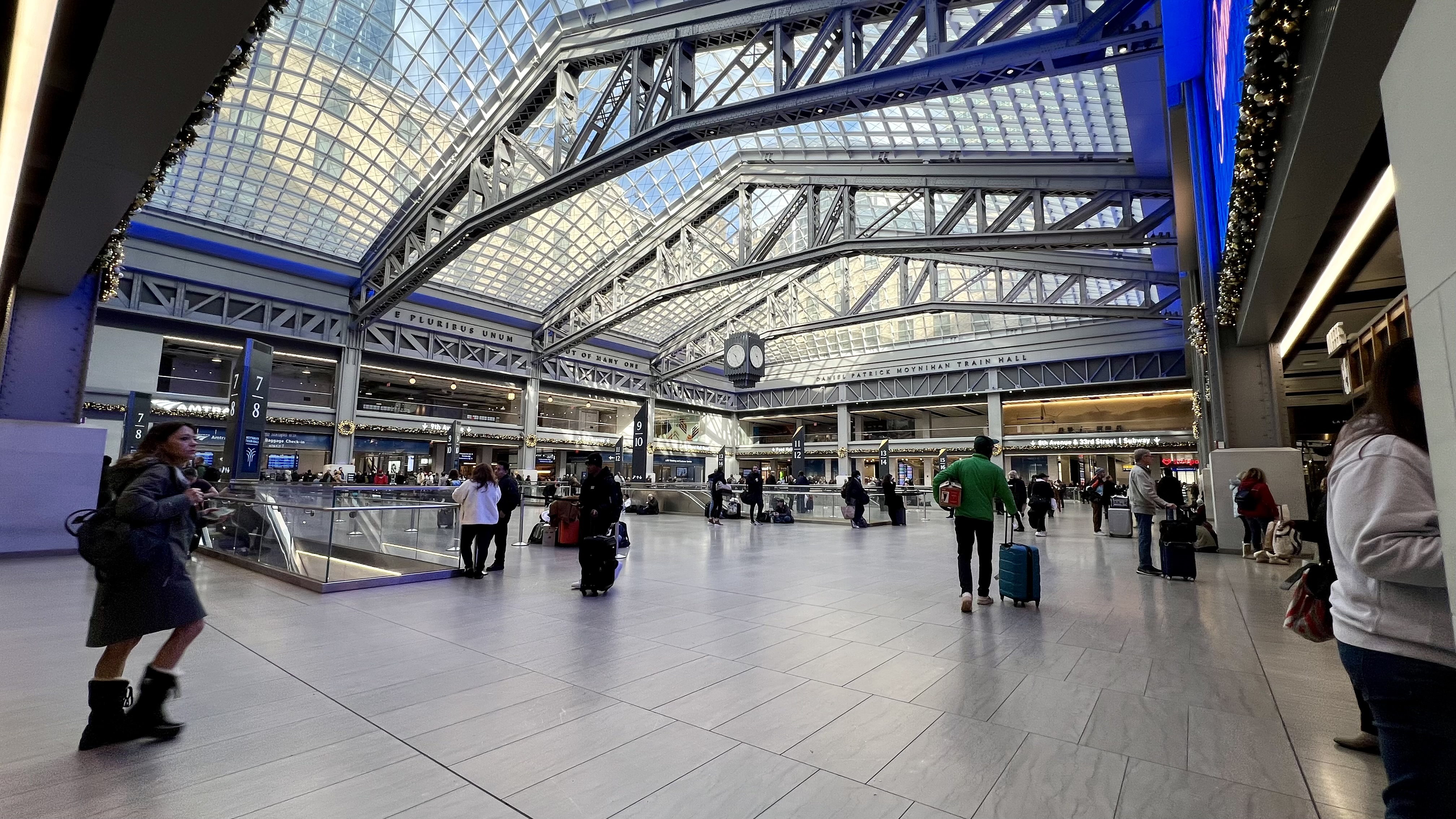When we travel overseas, we have a strong preference for train travel over short-distance flights. This was the case when we journeyed from Salzburg, Austria, to Munich and then to Frankfurt during our Christmas Markets tour in 2019. Similarly, in Japan, we rely on the Shinkansen for intercity travel, such as our travels from Osaka to Nagoya and onward to Tokyo. However, it’s a different story in the United States, where train travel is not as popular. Oftentimes, it seems to be the last option after driving or flying.
Despite this, exciting changes are happening in the world of train travel. A growing network of new rail lines is connecting major cities, and significant investments are being made to revitalize stations, effectively restoring the allure of train travel.
Here are a few routes where we prefer taking the train to flying or driving.
Orlando to Miami
This one hits close to home for us as we’re been waiting for years for the Brightline train to connect Orlando to Miami.
 The route isn’t perfect, as the Orlando station is at the airport, which involves getting there, parking off-site and taking the shuttle to Terminal C before getting on the train. And while the trip to Miami isn’t much shorter than driving in terms of time (unless there’s an accident on the Florida Turnpike that could shut it down for hours), it’s more comfortable to travel on a train, where you can get up, walk around, and go to the bathroom instead of being stuck in a car.
The route isn’t perfect, as the Orlando station is at the airport, which involves getting there, parking off-site and taking the shuttle to Terminal C before getting on the train. And while the trip to Miami isn’t much shorter than driving in terms of time (unless there’s an accident on the Florida Turnpike that could shut it down for hours), it’s more comfortable to travel on a train, where you can get up, walk around, and go to the bathroom instead of being stuck in a car.
Several YouTube Channels have compared if it’s faster to fly to Miami or to take the train.
I’ll let them take on the time challenge. For us, comfort and price are more important factors. Driving from Orlando to Miami isn’t pleasant. It’s a long drive, mostly through flat terrain, and if you’re traveling in the summer, you’ll probably have to drive through a massive thunderstorm along the way.
When we’re going to Miami for a cruise and won’t need our car while there, taking the train is an excellent option. However, if we’re flying to or from Miami and can catch a connecting flight to Orlando, it’s way more convenient than getting from the airport to the train station for a three-hour train trip instead of a one-hour flight.
I’d love to say that the train is always the best option on this route, but since you’ll either need to rent a car or use a rideshare when you reach your destination, I’ll say it’s an option to strongly consider if it meets your trip needs.
New York to Philadelphia
The Northeast Corridor is a major rail line that connects the cities of Boston and Washington, D.C. Along the way, it makes stops in Providence, New Haven, Stamford, New York City, Newark, Trenton, Philadelphia, Wilmington, and Baltimore. The corridor is primarily operated by Amtrak and features the high-speed Acela service, which represents the best the US has to offer in terms of high-speed rail travel.
We’ve traveled the section from New York to Philadelphia and flown the same route, so which is the better way to travel the 100 miles between the two cities?

In New York City, Amtrak service uses the newly built Moynihan Train Hall, which is located across the street from Penn Station. It’s one of the nicest train stations I’ve seen and rivals those in Europe and Asia. This brings me to another point about travel on the Northeast Corridor. Unlike in Florida, the train stations are located in central locations. Once you’re off the train, you can take public transportation to your destination.
The train ride from NYC to Philadelphia is a little more than 90 minutes, which is just about as long as it takes to drive, depending on traffic. If you choose to fly between the cities, the first thing you’d need to do is get to the airport. This is going to add a significant amount of time to your trip. If you’re traveling between the cities, the train is the way to go.
If you’re traveling further, to Washington, D.C., or Boston, it could make sense to fly, but you need to consider the amount of time it’ll take to check in, clear security and be there in time for your flight. The one time I flew from PHL-EWR was part of a trip where I was continuing to Orlando from Newark. I took a regional jet with United for the short hop before connecting for my flight home. That’s really the only reason I’d suggest flying between the two cities.
Other City Pairs
Besides the other city pairs on the Northeast Corridor, there are several other routes where taking the train makes sense instead of flying. These are mainly trips less than a few hours, and the time to travel to the airport, get through security and wait for a plane eats up much of the time savings of flying over taking a train.
Think of routes like Seattle to Vancouver or Los Angeles to San Diego. Taking the train is often the shortest way to travel between these cities.
Final Thought
Many comparisons of plane versus train focus on the speed of the trip. However, several things to consider when deciding how to travel between two cities include the reason for your trip, ease of getting around once you arrive, comfort, schedule, and price. While flying is definitely faster than taking a train, it’s not the most convenient way to travel and taking the train is often the better option.
Want to comment on this post? Great! Read this first to help ensure it gets approved.
Want to sponsor a post, write something for Your Mileage May Vary, or put ads on our site? Click here for more info.
Like this post? Please share it! We have plenty more just like it and would love it if you decided to hang around and sign up to get emailed notifications of when we post.
Whether you’ve read our articles before or this is the first time you’re stopping by, we’re really glad you’re here and hope you come back to visit again!
This post first appeared on Your Mileage May Vary

1 comment
In 2014 Bloomberg published figures showing more people taking the train NYC to Washington than flying (also Boston). Since the train is center city to center city (and you don’t have to get undressed in the train station), it seems like a no-brainer. https://www.bloomberg.com/news/articles/2014-11-26/why-more-northeast-u-s-travelers-take-the-train-instead-of-a-plane-in-2-charts
Do you know if somewhere there are more current figures showing the percentage of travels vis-a-vis the mode of travel?